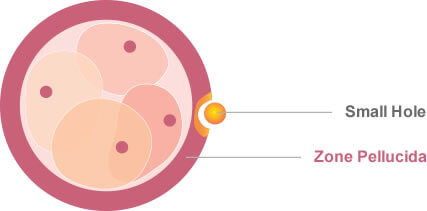What is Laser Assisted Hatching?
A human embryo has a soft outer ‘shell’ called the zona pellucida (or zona for short). When an embryo is five or six days old and is at the stage known as a blastocyst, it needs to escape or hatch out of the zona. Once the embryo has hatched out of the zona, it is able to implant into the lining of the womb. If the embryo does not hatch a pregnancy cannot occur.
How it works?

Laser assisted hatching is a technique whereby a small artificial hole is made in the zona of an embryo using a laser system. It is thought that the embryo can then hatch more easily through this hole and hopefully increases the chance of the embryo implanting.
Laser assisted hatching is performed just before the embryo transfer procedure and can be performed on embryos at the early cleavage stages (that is two or three days after the egg collection) and at the blastocyst stage (five or six days after the egg collection).

